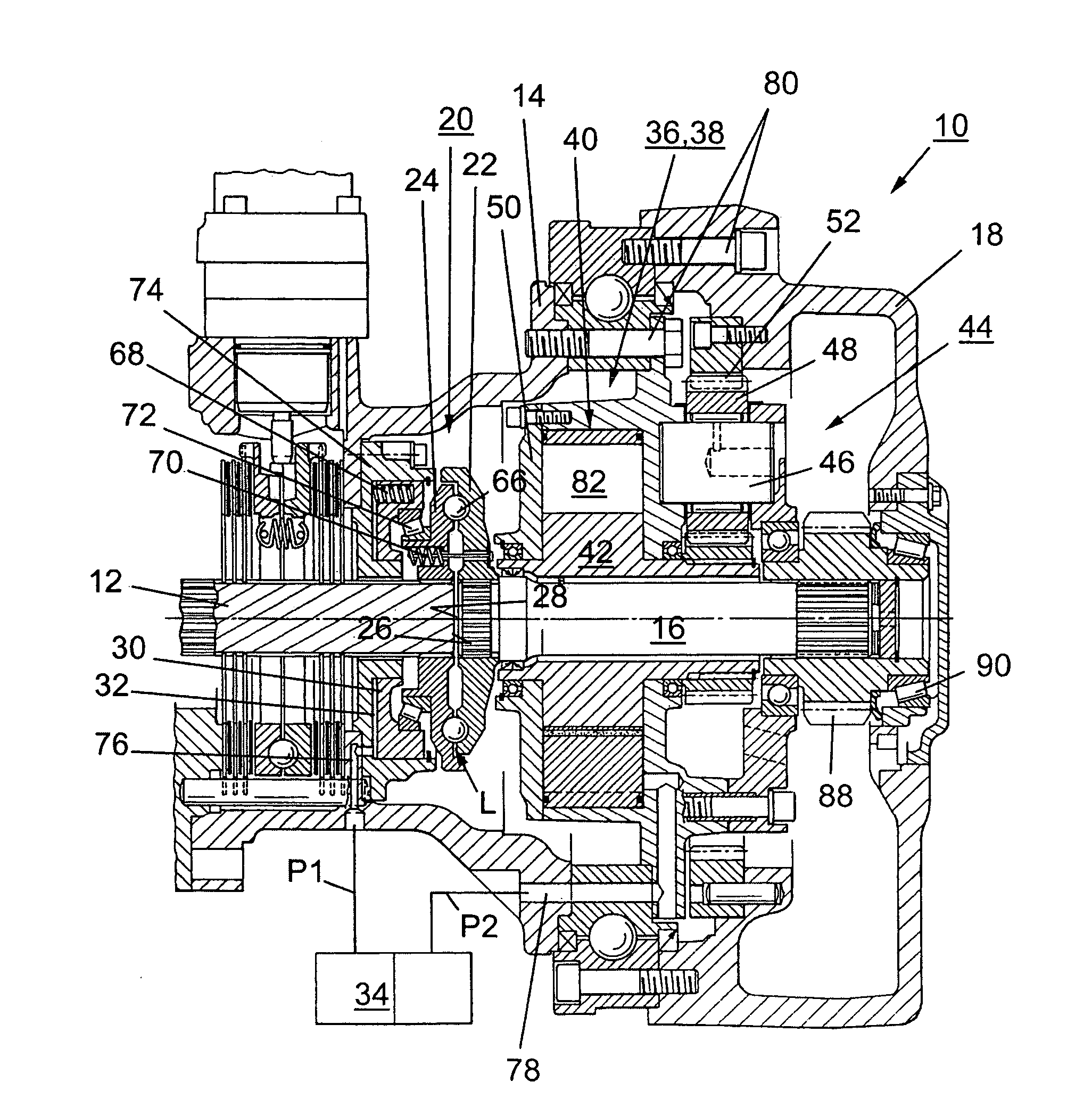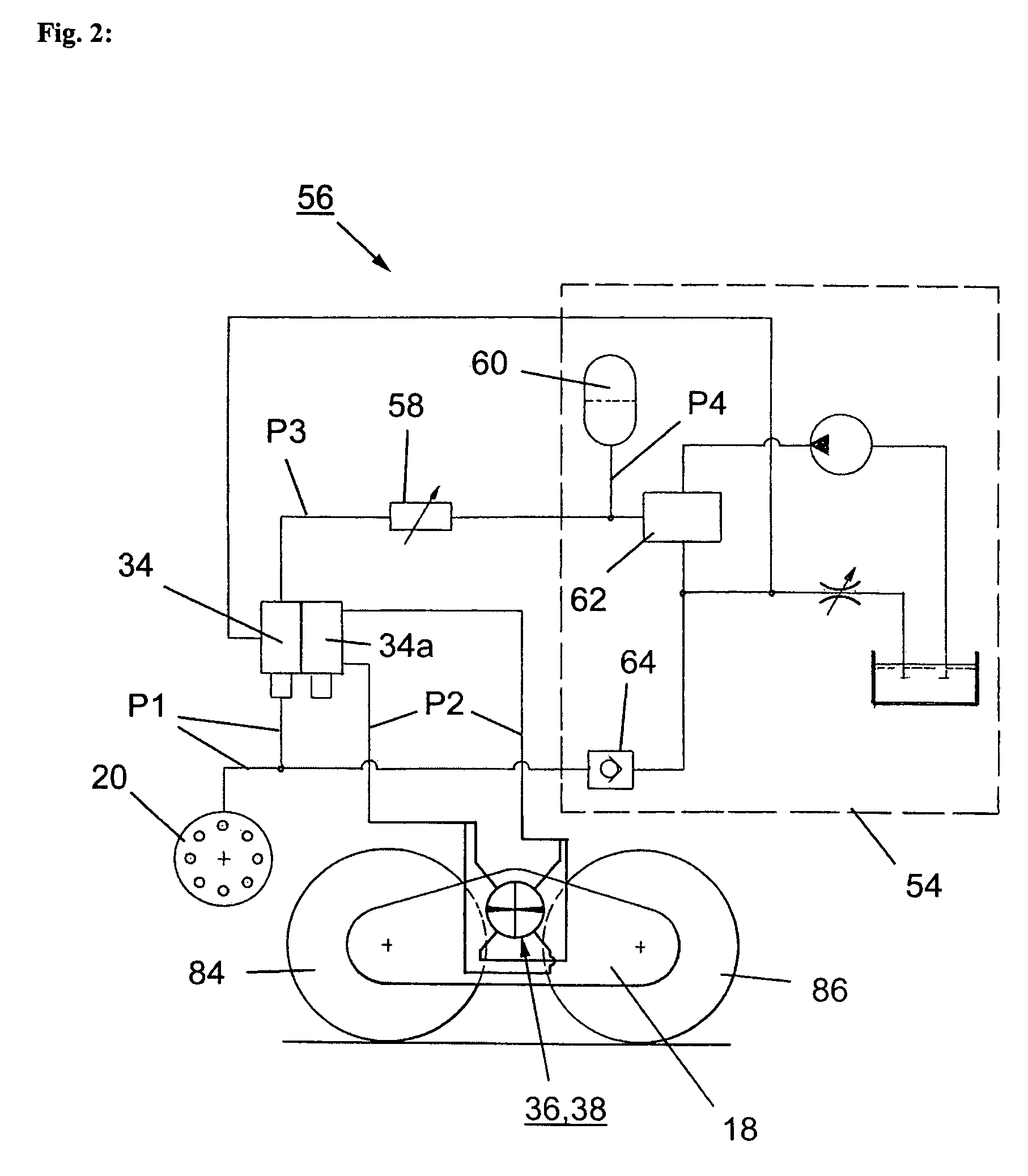Device and method for continuous regulation of the erection of a tandem axle
a technology of tandem axles and devices, which is applied in the direction of belts/chains/gearrings, mechanical equipment, and gear control, etc., can solve the problems of uneven erecting of axle beams, uneven distribution of wheel load between front and rear wheels, and tandem axles or boogie axles
- Summary
- Abstract
- Description
- Claims
- Application Information
AI Technical Summary
Benefits of technology
Problems solved by technology
Method used
Image
Examples
Embodiment Construction
[0022]FIG. 1 shows a sectional view of an embodiment of the device 10 for continuously regulating the erection of a tandem axle of a vehicle or a self-moving working machine. Therein, the vehicle has a vehicle frame (not shown), on which an axle housing 14 of a drive axle 12 is disposed. At the respective ends of the drive axle 12, a drive tandem axle 16 having a movable tandem axle housing 18 is respectively positioned. Through the drive tandem axle 16, the torque introduced by the drive axle 12 is mechanically distributed to the wheels 84, 86 (see FIG. 2) disposed in the tandem axle housing. One recognizes that the drive axle 12 is coaxially connected to the drive tandem axle 16 through a ball ramp device 20. Therein, the ball ramp device 20 is comprised of a first ball ramp disk 22 connected to an end 26 of the drive tandem axle 16 opposing an end 28 of the drive axle 12, and a second ball ramp disk 24 disposed in axially displaceable manner at the end 28 of the drive tandem axle...
PUM
 Login to View More
Login to View More Abstract
Description
Claims
Application Information
 Login to View More
Login to View More - R&D
- Intellectual Property
- Life Sciences
- Materials
- Tech Scout
- Unparalleled Data Quality
- Higher Quality Content
- 60% Fewer Hallucinations
Browse by: Latest US Patents, China's latest patents, Technical Efficacy Thesaurus, Application Domain, Technology Topic, Popular Technical Reports.
© 2025 PatSnap. All rights reserved.Legal|Privacy policy|Modern Slavery Act Transparency Statement|Sitemap|About US| Contact US: help@patsnap.com



